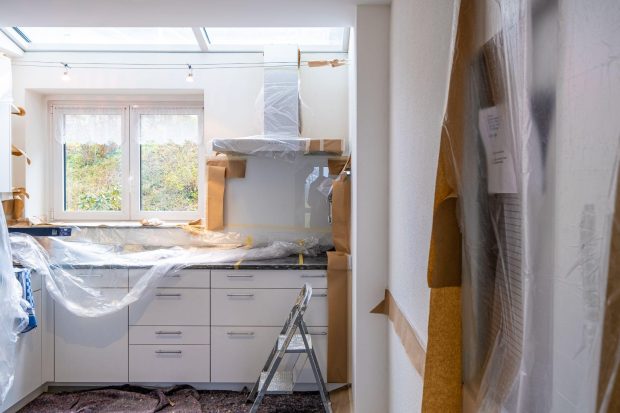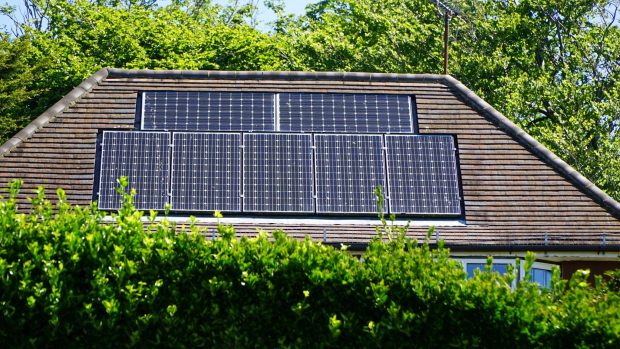If the time has finally arrived for you to begin home renovations, it will be worth your time to investigate and implement sustainable changes while you do it. Becoming more environmentally friendly is the way of the future, and aside from lowering your carbon footprint, it can also save you a ton of money.
Whether it is buying woolen and cotton rugs in Australia to save on heating or setting up rainwater tanks to reuse water, there are many ways you can set yourself up moving forward.

Assess Energy Leaks
Before jumping into any home renovations, it is essential to get an idea of how your home currently operates, energy-wise. More often than not, minor issues like ill-fitting doors and windows, small gas leaks, or improper insulation create the most significant problems regarding sustainable energy usage but usually are the simplest to fix.
By getting a professional to conduct a home energy assessment or energy audit, they can tell you the exact problem areas you have around your home. Knowing this information gives you a starting point for your renovations.
Greener Cooling Systems
Air conditioners in countries like the US are standard features in most homes, using roughly 6% of all electricity produced nationally. For this reason, upgrading your system to one that is more energy efficient is a positive step moving forward. However, you can pursue alternative options that are far more eco-friendly.
Creating better ventilation within your home is the greenest strategy you can follow, which can be achieved by opening windows to create a cross breeze or using fans to push air around. Fans use less electricity and can be switched off when leaving the room, meaning you aren’t paying to cool areas of your home nobody is using. Also, evaporative coolers are a lower-energy alternative to regular AC units if you live in an area of low humidity.
Solar Panels
Solar panels might feel like a significant investment initially, but you will be pleased you decided to opt for them over the long run. Used to provide electricity or water heating to your home, it is 100% renewable and clean, meaning you can rely less on fossil fuels for your home.
This type of technology is widely available, very reliable, silent, and relatively low maintenance. Depending on how much power your home needs to function efficiently, you might be able to rely solely on your solar panels, taking you off your city’s power grid altogether.

Eco-Friendly Home Heating
In the US, heating homes use more energy and costs more money than any other system, according to the US Department of Energy. This can equal about 45% of your entire utility bill. Things aren’t any better in the UK, where roughly 55% of energy bills are used on heating alone.
You would be doing yourself an injustice at these numbers by not seeking better ways to save energy. For example, you can upgrade a furnace or boiler to higher efficiency versions. Alternatively, you can invest in air source heat pumps, where heat from the air gets absorbed into a fluid, which becomes a compressed gas, raising its temperature. This is then transferred into a heating system.
Add Insulation
Heating systems are one of the biggest contributors to direct carbon emissions in the home. And while updating it is an excellent way to improve its overall energy efficiency, it is a good idea to establish whether your home is adequately insulated, as poor insulation will inevitably lead to more heating needed.
Where you live will dictate how much insulation you need to be comfortable, but the most straightforward way to improve it in your house is in the roof, as this is where the most heat escapes throughout the day. Fiberglass sheeting laid in your attic or ceiling cavity will do the trick. Alternatively, full-house insulation will be the best choice if you live where temperatures plummet during winter.
Shop Sustainably for Homegoods
How you choose to furnish your home and the products you buy all contribute to making it greener. This can be in the form of purchasing sustainable or recycled products, eco-paints, energy-efficient appliances and electronics, and solar panels.
When shopping for appliances, check for the Energy Star label, confirming the products meet specific requirements to be classified as energy efficient. Plenty of appliance stores nowadays sell energy-efficient appliances so it shouldn’t be hard to find one. In addition, switching to LED bulbs indoors and outdoors will lower your bills. Regarding furniture pieces, seek out second-hand or vintage options and items made from sustainable materials such as wool, bamboo, or plant-based foams.

Rainwater Catchments
Collecting rainwater allows you to reuse it, meaning you rely less on taking water from the municipality or the mains. It is very eco-friendly and means you can conserve essential supplies at a time when water shortages are becoming far more frequent.
You can use this rainwater for irrigation in the garden, indoors for flushing toilets, and using the washing machine. If you can adequately filter and disinfect the rainwater, you can meet the needs of your entire household. Of course, the size of tanks you will need largely depends on what you choose to use the water for. But, like solar panels, the initial investment pays itself off.
Read More:
Creating an eco-friendly garden for your family and fur babies

